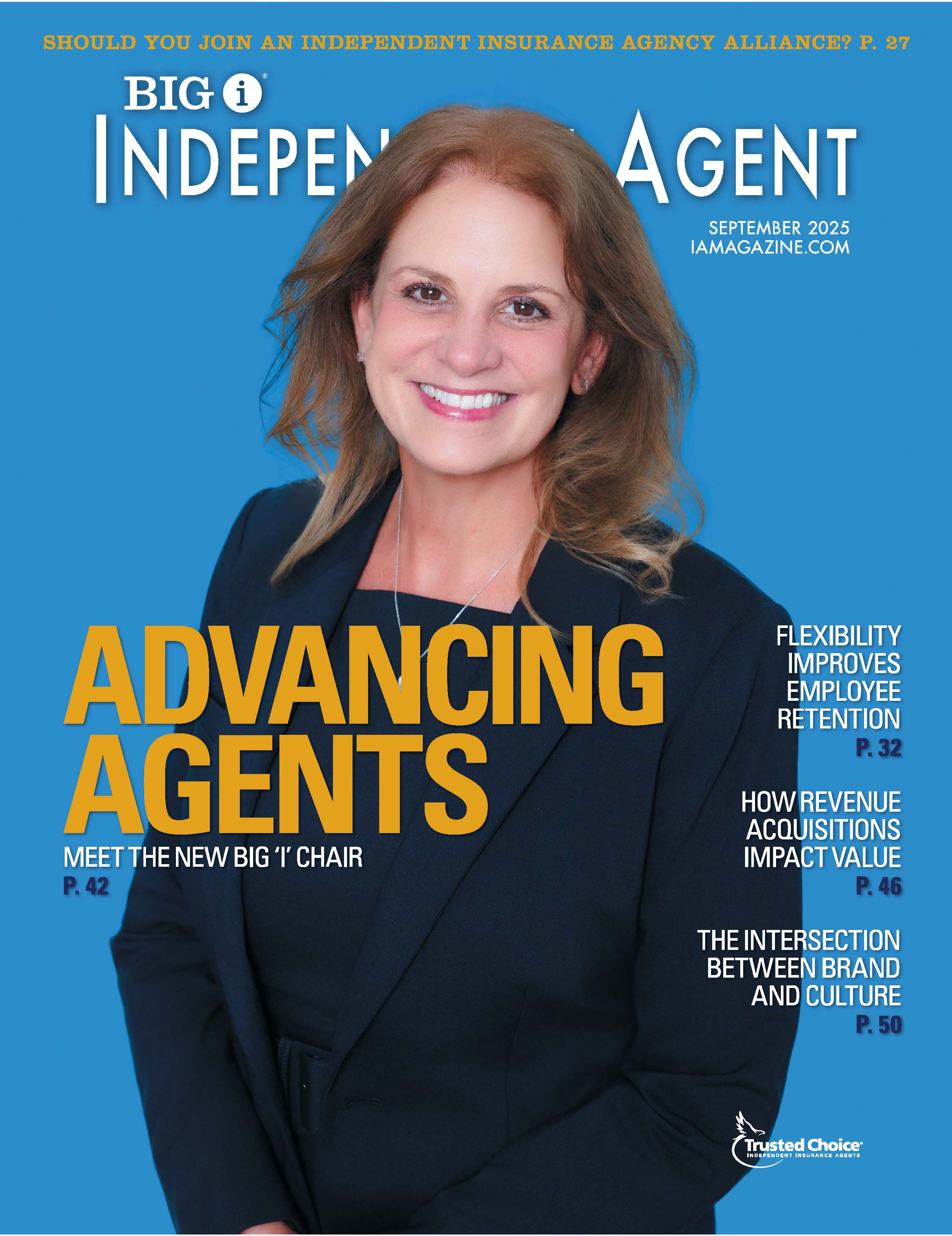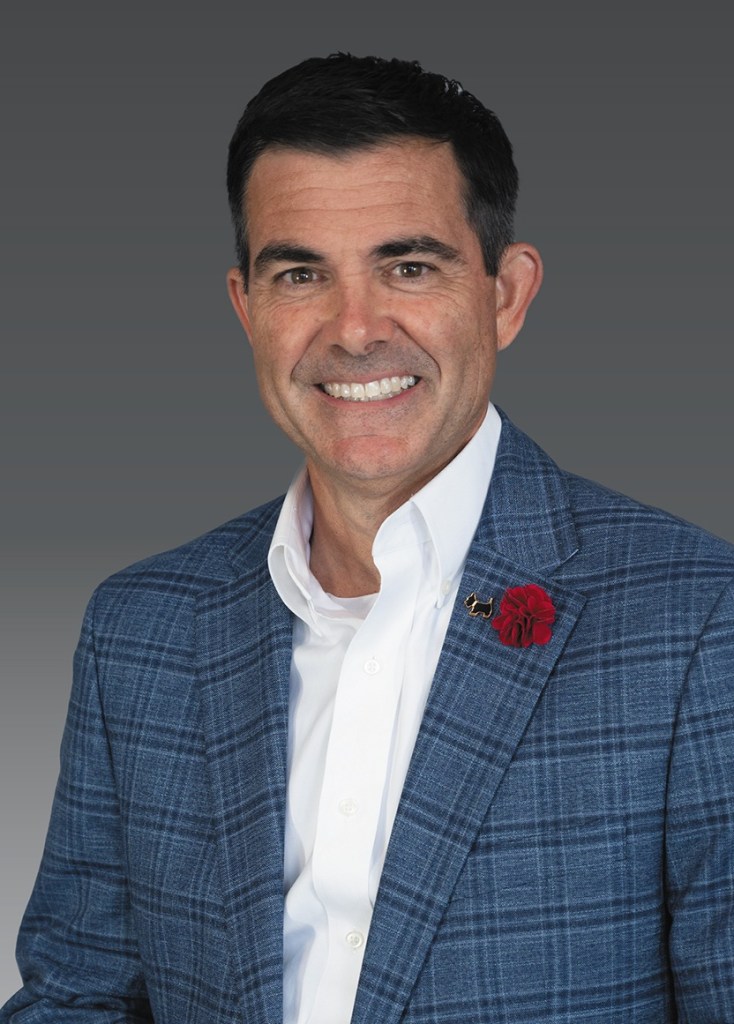Go Fish
By: Hodges
Scott Kennedy of Cherry Creek Insurance Group in Greenwood, Colo. ensures his producers continually net good prospects. Weekly mentoring sessions with a sales pro, bi-monthly sales meetings and membership in affinity groups are just a few of the methods used at the 26-person brokerage to help agents find and reel in the best business catches. “Our philosophy around marketing is ‘steep and deep,’” says Kennedy, brokerage president of Cherry Creek Insurance Group. “We like to develop areas of expertise within an industry segment and leverage that credibility into relationships—and ultimately, sales.”
Once producers join affinity groups, Kennedy closely monitors their prospect reservoirs to help his sales people zero in on the best potential sales. “We can develop a list of X dates and follow up ‘til the cows come home,” he says. “But that’s not an efficient way to develop a commercial book of insureds.”
How well is your agency prospecting? Do weekly activity reports for each producer appear each Monday, or are you unsure who last hooked a big fish? Few agencies can afford to feed solely on renewals as the soft market and recession wear on. Smart agency owners are not only demanding that their people sell through this difficult period; they’re also choosing the bait to be used and monitoring the results. “We want to be an efficient sales organization,” Kennedy explains. “And to do that, we have to be very good at uncovering the (prospects) who won’t pan out as soon as possible.”
Snagging great prospects means finding out as much about them as possible and then looking for reasons to throw them back in the lake. “We practically beg our prospects to say they love their current agents,” says one highly successful agency owner.“We do everything we can to find out if someone’s really a suspect—or not.”
Reeling in Referrals
Darrell Camilletti, owner of Mountain West Insurance& Financial Services, LLC, in Craig, Colo., agrees that casting your line for expiration dates is old fashioned and ineffective. Instead, he and his producers spend much of their time finding “fish” that are already in the barrel.
So successful is the agency at eliciting referrals that Camilletti says they generate 95% of new commercial business and roughly 80% of new personal accounts. “A lot of our customers send us business voluntarily,” he says. And when they don’t, producers get on the phone and start asking.
It works: Mountain West Insurance & Financial Services grew 16% last year, and Camilletti expects similar growth in 2009. “We try to be very proactive and not focused on external factors,” he says. “We try to deal with things in our control.”
Craig Kanter would agree with Camilletti’s approach. The president of Risk Resource Partners, Ltd., a Skokie, Ill.-based sales consultancy, believes referrals are far and away the finest prospects out there. “There are opportunities around every corner,” he says. “It’s not about where to find them, but whether you know how to find them and who to ask.”
Kanter is so convinced of the value of referrals that he has developed a program teaching other agencies how to ask for them. It is based, not surprisingly, on nurturing relationships. “This is an indirect approach to getting prospects,” he admits. “But you have to spend time with people to develop their trust.” Once you do, Kanter says the advantages are huge. Your introduction to the prospect will be warm, because you’re borrowing the trust of the person who referred you.
Choosing the Right Bait
But what if you can’t wait until the timing is right because you need new leads and new business right now? Kanter says you may have to conduct a strategic telemarketing campaign for six months to a year. “But don’t do that and then fail to nurture the new relationships you start,” he cautions. And while you’re telemarketing or going door to door, devote 10% of your time to developing existing relationships. “I guarantee if you just call and ask friends, relatives and neighbors to breakfast, but don’t try (at that time) to sell them, you’ll be cementing relationships,” Kanter asserts. These people will be expecting you to ask for leads—and instead, you’re just enjoying spending time with them. “What you’ll find,” Kanter assures, “is that this 10% of your time will soon create a huge payback.”
The challenge to telemarketing, of course, is to call the “right” people. To make sure that’s what he’s doing, Jerry Randall purchases leads from insurance marketing firms. As the president of Advantage Insurance Group in Nashville, Tenn., Randall confirms that personal referrals are the best prospects, but says they don’t always drive in enough quoting opportunities to work on them full-time.
To supplement, Randall buys leads for$10 to $14 apiece from companies that allow him to narrow down the leads even further. He does this by applying filters that detect certain specified criteria and eliminate leads containing these characteristics before they are sent to him. Randall can, for example, ask the marketing company to send only leads for people of a certain age range or with good driving records. He can request a filter that sends only leads for homeowners with certain property values or to omit those who’ve experienced more than one claim. “The per-lead cost isn’t what’s most important,” he emphasizes. “I may pay more than some for my leads, but I can close a substantial amount more, so my return on investment is higher.”
It’s important to note that Randall’s agency is still quite new. After years of working for a captive company, he opened an independent agency in January of this year. “I have no renewal book of business to work (on),” he explains. “I’ve got to bring in new business all the time, and people who call these (marketing) companies for insurance information aren’t just sticking their toes in the water. They’re committed to purchasing some insurance.”
Randall began purchasing leads when he worked as a captive agent, so his experience is valuable. He has found, for instance, that “exclusive” leads, or those not sent to any other agent, aren’t necessarily better than those he filters and shares with other lead-buyers. “When I talked to these prospects, I found they didn’t feel they’d had a sufficient shopping experience,” he says. “They were only getting one call from an agent, and that was me. So for a lot of them, talking tome wasn’t enough for them to move their coverage.”
Another tip from Randall—link your telemarketing to specific insurance products or carrier underwriting practices. Ask your carriers what they want most to sell, and shop your carriers to identify the best values and coverages. “You just have to find the competitive advantages, and then buy your leads using that information,” he says.
Finding the Fish
Some marketing firms still sell lists that they compile from a broad spectrum of sources, such as retail outlets, telephone directories and merchant associations. But increasingly, insurance leads are collected through the Internet or by telemarketing.
Internet-generated leads typically occur when a person looking for insurance uses Google or another search engine to find a certain type of insurance. He or she may be searching for auto insurance for drivers with poor driving records, for example, or high-end coverage for valuable assets. Among the choices the search engine produces may be Web sites for firms offering to provide multiple quotes for coverage from multiple insurance companies.
By clicking on one of these choices, the person may be taken to a “landing page” that lists various insurers whose agents have agreed to participate. On this page, they’ll likely be asked information such as their zip code and the type of coverage they’re seeking. When they hit “enter” or “go,” a new screen will pop up asking them to make more choices about the coverage they need. These screens continue until the person has answered all questions posed and given their contact information. Once the request is submitted, a new screen appears providing information about quotes from various agents.
Krista Farmer, a spokeswoman for HometownQuotes in Franklin, Tenn., says prospects who don’t have the benefit of a referral are turning to the Internet in droves. “A few may drive up and down the street looking for insurance agencies, and a few may turn to the Yellow Pages,” she says. “But so many more are jumping online and that’s where we come in.”
HometownQuotes offers insurance quotes from a dozen different carriers through participating agents. Prospects who go to the site are asked to fill out a detailed online application for each type of coverage they need. Those who are matched receive quotes from three or four agents who’ve received their information, and the applicant is given contact information for each agent in return. “Then you receive calls or e-mails from these agents, and this can happen in as little as five minutes,” Farmer says.
Founded in 2003 by two insurance agents, HometownQuotes receives thousands of applications each week for personal lines insurance and group health coverage. A lead quality-control department works to filter out bogus submittals while bon a fide requests are sent in real time to agents. “Unlike other marketing methods, such as billboards or direct mail, you can easily track online how many leads you receive, how many you close and the amount of each sale,” says Farmer. You can also retain information on prospects who don’t buy right away.
Farmer says not all Internet-generated leads are looking for the lowest price. She has personally responded to e-mails from prospects who say they aren’t just looking for quotes, but for a relationship with a good agent. “I’ve told them to come to our Web site and fill out our form so we can match them with agents and give them the opportunity to choose the one they connect with the best,” she says.
After all, agent-client relationships work both ways. And when agents do all they can to accommodate their clients, they’re sure to land even more high quality referrals—even if it takes some patience.
Hodges (hodgeswrites@aol.com) is IA senior writer.
A Surprising Source for Referrals
Jay Helzer keeps all his lines in the water when fishing for prospects, but he’s found one school of fish that many agents overlook—his competitors. “We pride ourselves on relationships with other brokers in the industry, and they (generate) the majority of our referrals,” says Helzer, co-principal of Renaissance Insurance Group in Windsor, Colo.
How does this work? Helzer credits a noble philosophy that at the end of the day: it’s all about the client. “If there’s a risk of your client getting a non-renewal or a tremendous rate increase, you want to be able to give these clients quality referrals,” he explains. That’s why each producer in this 18-person firm maintains friendly relations with six or seven competing brokers and agents.
Helzer and his partner, Ryan Hicks, started the practice when they opened Renaissance Insurance in 2001. The idea made sense to them because both men knew other insurance professionals who had begun their businesses around the same time. “When we first started, we’d go home at night and say, ‘We’ll do this one day at a time, and eventually, it will fall together,’” Helzer recalls.
The two agency owners set a strict schedule for prospecting and adhered to it religiously, whether that meant phoning people in their networks or meeting them for lunch. They mined key relationships that went back for years, and when they began to grow, they instilled this method into their new producers.
Today, every employee at Renaissance Insurance has an ear to the ground for referrals. As the business has expanded, customer service representatives and receptionists have begun landing referrals when they communicate with direct writers and other brokers. “Sometimes we’re all fierce competitors. And other times, we’re sharing a few names,” Helzer says.
—S.H.
Prospecting Resources
Other than the Big “I” Virtual University, the prospecting Web sites and publications listed here are not endorsed by Independent Agent or by the Big “I”. However, they may help you find ideas and tactics to improve your prospecting success.
• Agency Ideas newsletter: A subscription-based, six-issue, print publication with additional information available online. Produced by former agent Alan Shulman, a subscription includes free marketing-planning software. Visit www.agencyideas.com for more information.
• Aslan Training & Development: A white paper, entitled “The Seven Barriers to Successful Prospecting, and How to Overcome Them,” is available free of charge. To download the paper, go to www.aslantraining.com/index.asp.
• Hometownquotes.com: Provides leads generated through its own Web site. Personal lines, life-health and group health leads are available and can be filtered to fit your specific target market.
• Big “I” Best Practices Insurance Sales Webinars: “A New Look at Classic Insurance Sales Models,” a three-session course taught by Lisa Harrington. To register, go to www.independentagent.com and click on Best Practices.
• Salesgenie.com: Provides leads from databases compiled via telemarketing. Leads can be customized with your own criteria. Free trial period is available.
—S.H










